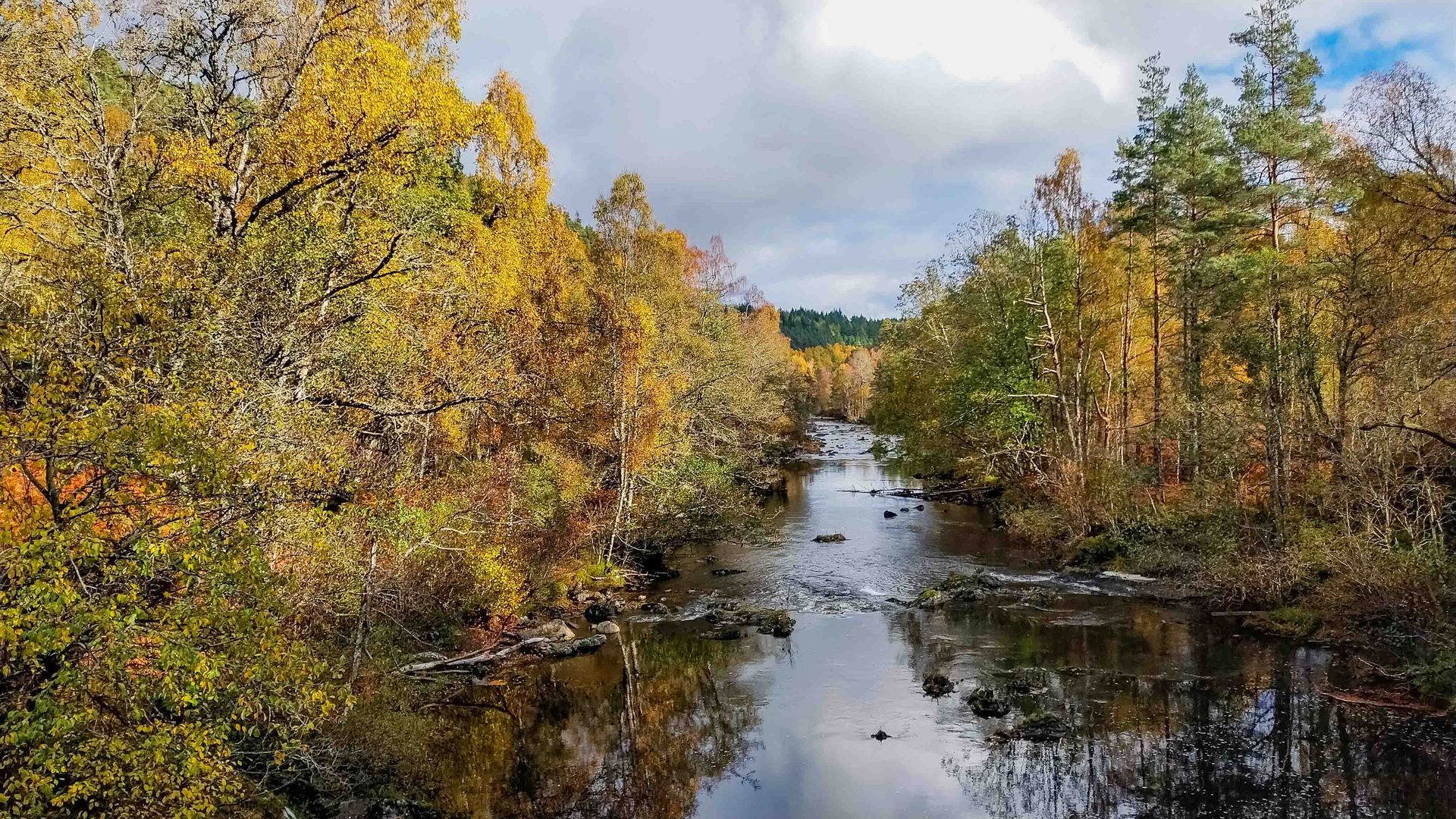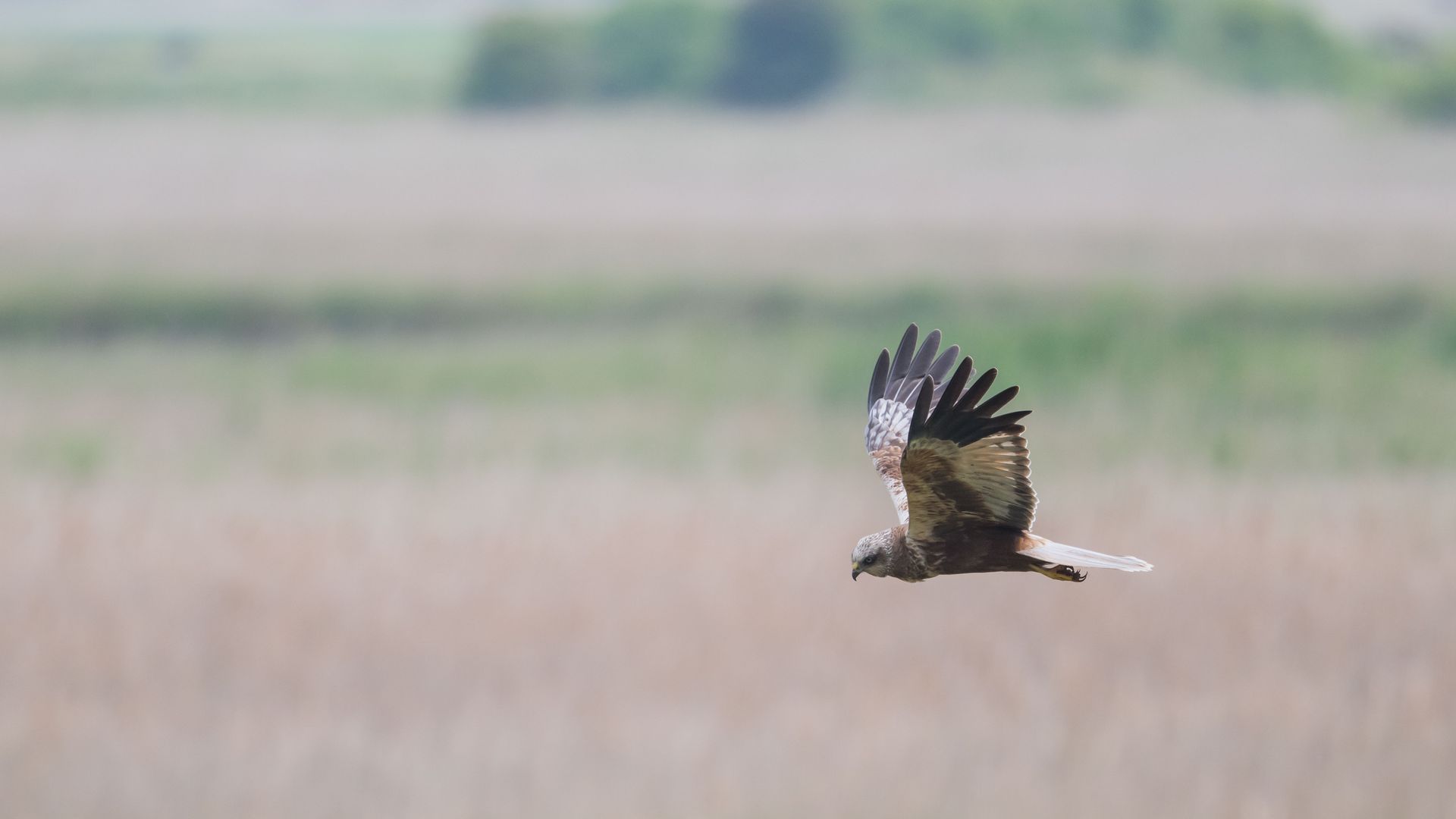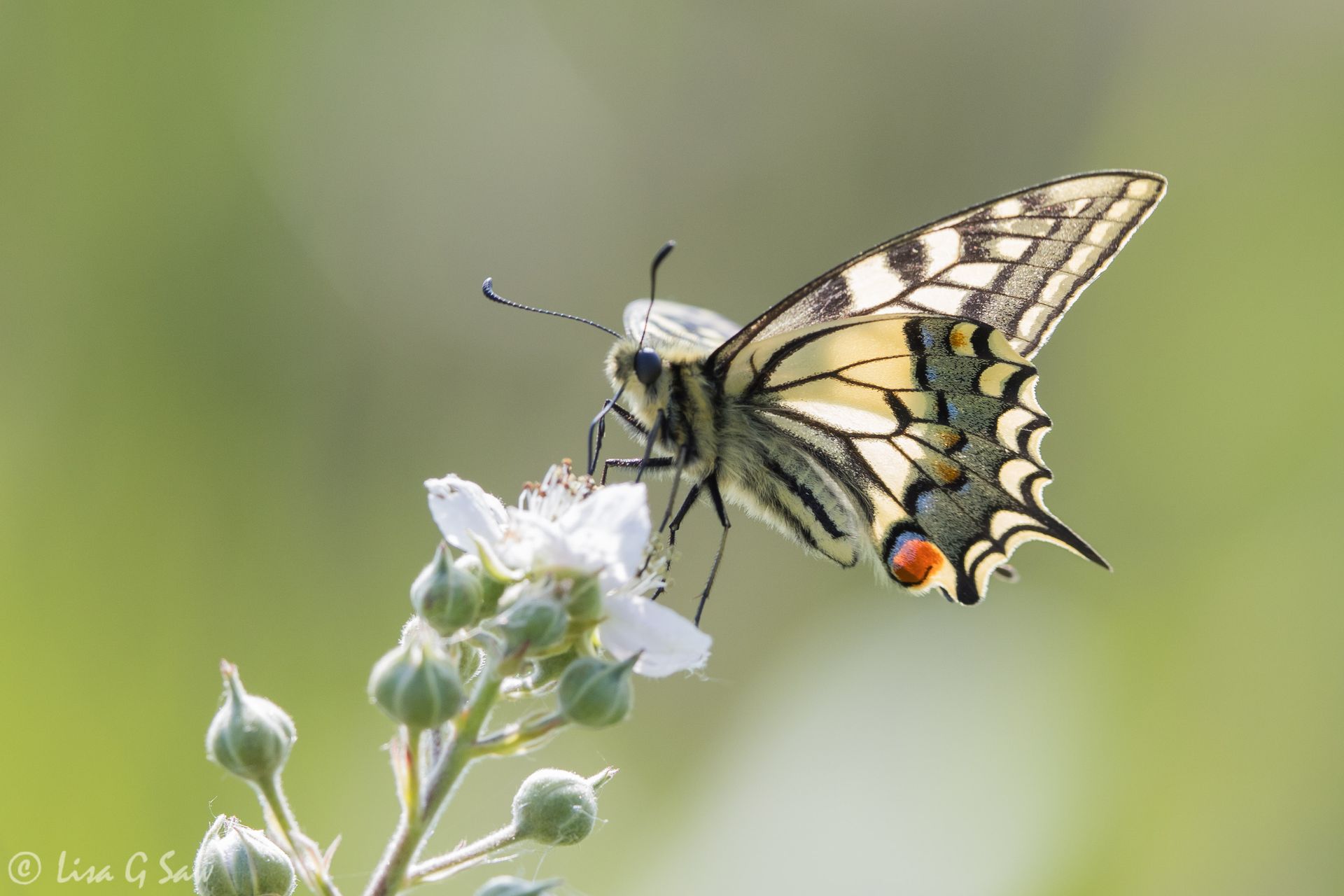In Search of the Heath Fritillary
When Bob and I returned from our Isle of Wight trip to see the Glanville Fritillary for the first time, I was eager for the next challenge - seeing the Heath Fritillary butterfly in Kent. However, the weather wasn't quite ideal and I had to sit tight for another week before there was a good opportunity for us to head over for the day. Thankfully, it was a Friday, which meant there would be fewer people around, which we both prefer as it's more peaceful. It was still very early in the flight season with only a few sightings having been posted on social media, and this meant we might have a good chance of seeing some fresh butterflies, which is always lovely when they look pristine and fresh.
Thankfully, we both don't mind the early starts when there is a good reason for it and it wasn't too ridiculously early on this occasion! It took us just over two hours to reach East Blean Woods car park, after a few detours and delays. We arrived just after 9am and only a few other vehicles were parked there. It was still slightly cool and cloudy, which meant the butterflies wouldn't be too active yet. This was ideal for us, so we could take plenty of photos.
When we began the walk, I felt fairly oprtimistic we'd see some during the day, but I was prepared that we might need to look at various different sites in the area. I didn't expect that within 5 minutes of leaving the car park and having only walked 50 metres, I would spot the first one of the day, roosting on a bracken fern in the cool shade of the woods. It was a lovely fresh specimen and a wonderful start to the day. Within moments of me spotting this one, Bob saw another one roosting nearby. Fabulous!
Needless to say, I was thrilled the pressure was once again off so early on, just like it had been on the Isle of Wight. Plus, Bob knows how much I want to find the butterflies for myself and not have someone else point it out to me. So, I was doubly happy.
This was the last of the Fritillary species of butterfly for me to see in the UK. To be honest, if you'd asked me about five years ago what a fritillary was, I wouldn't have had a clue. The fact we actually have eight different UK species of Fritillary is quite remarkable and I'm guessing the majority of the British population probably haven't seen a single one. The Heath Fritillary is one of the smallest of them. Telling them apart is a lot easier when you have the opportunity to see their undersides. Whilst the Heath Fritillary is very similar looking to the larger Marsh Fritillary, it has darker markings around all the white 'pearls'. There are no spots on the underside compared with the Glanville Fritillary (photo shown next to it) or the other similar small species: Pearl-bordered and Small Pearl-bordered Fritillaries.
Just around the corner from the first butterfly I'd seen, I spotted another one, but with its wings open. It was a male in fabulous condition. You can see it's like many other male butterflies - it has a long slender abdomen. Soon after I saw another lovely one, both posing beautifully for me. Clearly they were warming up, now their wings were open, but thankfully they weren't jittery yet and on the wing.
Once again, I've shown the Glanville Fritillary next to the Heath Fritillary so you can see just how similar to each other they are on the upperwing. The darker sections on the Heath Fritillary are much more dominant, whereas it's the orange colour that is more dominant on the Glanville Fritillary, plus it also has a few block spots on the lower end of the hindwing.
The Heath Fritillary is a rare species and very localised. I'd heard there were good numbers of them most years in this specific part of Kent. Although we hadn't walked very far yet, we'd only seen four individuals so far. It's a species that has been saved from the brink of extinction in England by conservation management. Interestingly, it's name is a bit misleading. In the UK, it can be found in different types of habitat - coppiced woodland (Kent and Essex), sheltered valleys (Exmoor) and abandoned hay meadows (Devon and Cornwall). So maybe it isn't so surprising to discover that the food plant for the caterpillar is different too in each of these areas - it's usually Common Cow-wheat (Kent and Essex), but also Foxglove (Exmoor) or Ribwort Platain and Germander Speedwell (Devon and Cornwall).
As we continued to walk along the footpath, Bob noticed there was a good amount of Common Cow-wheat around us. He commented that he'd love to see the Heath Fritillary caterpillar, having only ever seen it before once. I wondered what the likelihood really was, considering we were looking for the butterflies and I didn't imagine you could see both stages of development at the same time. However, we were early in the season and they do spend the majority of the year as a caterpillar, even into May, so it wasn't an impossibility. Well, I swear, within seconds of us talking about it, he actually spotted one. Then, in next to no time at all, he spotted more and so did I. They're very funky looking with lots of spikes and certainly eye-catching!
By this point, we'd seen more caterpillars than adults. We kept count, and as the morning progressed it became a bit of a fun competition, which we'd see more of. I was championing the adult butterfly and Bob the larvae.
We continue to walk around the woodland, following the paths, but for a while we didn't see any more of the fritillaries, which was a bit concerning. Were they really confined to just the one small area of the wood? Would we see any more? However, there were other creatures of interest, which we stopped to look at and photograph.
Bob noticed a tiny attractive micro moth, which he didn't think he'd seen before. As luck would have it, another moth enthusiast happened to pass by at the same time with his family and he'd seen them earlier. He thought they were Dasycera oliviella, which was confirmed with Obsidentify. Later, I found out online they're also known as Cream-spot Bark Moth and it's a relatively rare species of moth only found in the south and south-east of England. There were quite a few of them on several of the large leaves of one specific Sweet Chestnut tree stump. It seemed as though maybe they'd just emerged, with so many seen together in the one spot. I particularly love the hint of pink colouring you can see in the middle and edge fringing of the wing when you look closely.
By this time, breaks in the cloud meant the sun was shining more and it was beginning to warm up. Everything was starting to become more active, which wasn't good news for us trying to photograph the Heath Fritillary, so we progressed onwards. We were almost going to turn back and go in a different direction towards an area Bob had been before on a previous year, but I suggested we walk a little further to where we could see the path came to an intersection first, just to see what was up ahead.
It was lucky we did, because when we reached that spot, to our left looked more promising and almost immediately we saw more Heath Fritillaries on the bracken along this new path. Along that little stretch we also saw more of the Cream-spot Bark Moth including a mating pair that Bob found. When I looked more closely at the photos later, I really noticed the slightly different colour of them. The one on the right is more black (male) and the one of the left is more brown (female). I'm not sure if this is an example of sexual dimorphism or that one is simply more faded. However, the males have broader antennae than the female, which is why I think the one on the right is the male.
I was really pleased we found some more Heath Fritillaries. As the sun was only shining intermittently, we were lucky to have some good photo opportunities. I guess it's also to our advantage that females are less flighty. This one was posing beautifully.
We didn't have too long though, as it was getting warmer and soon we started seeing the butterflies opening their wings.
Interestingly, once again, we were only seeing the butterflies in a small section. When we continued along the path, we didn't spot any more until we turned onto another path, walking in a different direction. We were in a more shaded section of the woodland and that was when we noticed a lot more caterpillars. We were both finding them as we were trying to count. This meant the number of caterpillars seen was far exceeding the butterflies and I figured I'd never be able to catch up to Bob's number.
Whilst in this shady spot, I noticed another moth and what can only be described as the longest antenna I've ever seen! Not only that, there was a loop in it! Bizarre! I also noticed the left antenna was really short. I presume the moth might have been attacked and lost it that way or something similar. Bob found out it was an Adela croesella, which is also known as the Lesser Banded Longhorn. Only the males have these long antennae.
Further on from this shaded spot we came to an open glade where we saw many more Heath Fritillary. In fact, we spent the majority of our time there. It was fabulous. On one side of the path, there was still a decent amount of shade from the trees, but on the other side, it was brightening up and there was lots more activity. To start with we focused on the cooler side, to photograph what we could find. I particularly loved this male seen from the underside. It was halfway up two blades of grass with its legs outstretched between them.
A short while later, I had even better luck with this male - it might even have been the same one that had just flown to another blade of grass. He was clinging on to a single blade with not much else around him. It was lovely having a clear view of it. I used my macro lens for the first photo. In the second one of the upperwings, I've used my telephoto lens. You can see the nice effect you can create when you do this, as it blurs the background, so there's less distraction behind.
It was wonderful seeing so many butterflies in this one small area. Whilst some were still perched in the shade, others were flying around. I had to count several times, because new ones kept appearing. We must have seen half our total for the day in this one spot, which meant I was catching Bob up on his caterpillar count.
At one point, I stood back in the shade drinking some water and enjoyed watching all the butterflies flitting about. Then I noticed a butterfly land on a branch near me. All the others were closer to the ground. I grabbed a photo, and only later did I realise it was one of the older ones that had been on the wing longer. Notice how the white fringing is virtually non-existent.
I was more surprised when I spotted one had landed on Bob's rucksack. It was probaby drawn to the pink logo.
It's great when you have a good number as you start to see more interactions between the butterflies. As usual, the males were constantly on the lookout for females...
...and as usual, there were more rejections than acceptances. In the next photo it's easy to see how the female has raised her abdomen up in the typical butterfly rejection pose. However, the male was stubborn and hung around for a while before retreating.
One thing that impresses me is how the male is able to bend and twist its abdomen towards the females, trying to encourage her to 'hook up!' You can't see it easily in the last photo, but the male's abdomen is just below the female's. It's a little easier to see in the video. In it, you can also appreciate how there is a lot of competition.
Did you notice the little spider underneath the leaf? It made a quick escape as soon as the third one showed up, dropping down to the ground.
It wasn't surprising that we eventually saw a mating pair. I was really pleased and had been hoping to. I felt sorry for the poor couple who were bombared with the attentions of many others, whilst they were attached to each other.
We saw several females, with their slightly more bulbous abdoman, which is more pointed at the end. The abdomen of the female in the first photo looks larger than the right, which could be an indication that she is closer to being ready to lay her eggs. Females mate within a few hours of emergence and wait several more days before egg laying. They can lay between 80-150 eggs in one mass on the underside of a small Bramble or dead left, close to the foodplant. With this amount of eggs in her body, it isn't surprising to discover that she flies close to the ground and sometimes crawls around in the undergrowth well hidden. She isn't able to travel very far, which is why new colonies don't develop elsewhere. The existing colonies are isolated.
Later, it was lovely having the opportunity to photograph this mating couple in the shade, away from all the commotion in the sunshine. They were undisturbed by other males and left in peace.
By lunchtime we'd had our fill and decided to head back to the car for something to eat. It had been so worthwhile arriving early in the morning, We definitely had the best opportunities photographing the butterflies before it became too warm, when they were then flighty.
Although we had the opportunity to move onto another site, we ended up staying where we were, but going for a bit more of a wander into the other parts of the wood we'd not yet explored. We passed more of the Heath Fritillary caterpillars, but this time they were more in the sunshine and a little easier to photograph.
We checked out the area that Bob had seen some Heath Fritillaries in a previous year, but it was completely overgrown. I suspect from year to year they clear new areas, which help give the food plant the space and light it needs to grow all around the wood. We did see about three more isolated individual butterflies nectaring or flying around as we continued on our walk.
The Heath Fritillary caterpillars weren't the only ones we saw. As we were working our way along a narrow path that was really overgrown, Bob suddenly spotted a Vapourer Moth caterpillar, then a few more. I'll never forget the first time I ever saw one of these little cuties. I was pulled over on the M25 with a flat tyre on my way north to Scotland. There was one crawling along the barrier on the side of the road. This was a much better natural setting to take a few photos! It's not as spikey as the Heath Fritillary, but it does have four impressive yellow brush-like clumps of hairs on its back, and is pretty funky looking too in my book.
You can see how it's munching its way through the leaf.
Eventually, we found our way back to the open glade we'd enjoyed so much earlier. It was still sunny and all the butterflies were as active as ever. I took very few photos second time around. But, I did spot one male basking in the sunshine on a leaf with its wings fully stretched out. It was a lovely last show to end what had been a fabulous day out. In the end we must have seen about 30 adult butterflies, but closer to 40 caterpillars.
Thanks to the work of many dedicated people conserving this area of woodland, hopefully the Heath Fritillary will continue to thrive in this part of Kent, and elsewhere, for future generations to enjoy too.
Now, I'm just left with one more UK butterfly I'd like to see to complete my list - the impressive large yellow and black Swallowtail, which is only found in Norfolk. I've been focusing my attention on the butterflies that live a complete life cycle in the UK, so that doesn't include rare migrant species like the Queen of Spain Fritllary - though I'd love to see them if the opportunity arose.
There is one other species that deserves a mention. I've excluded the Cryptic Wood White (Leptidea juvernica) from my list. It's only found in Ireland. It looks exactly like a Wood White (Leptidea sinapis), which I have already seen in Sussex. Visually, they are no different. Although they are found in different places, the only way to differentiate between them is by examining the genitalia or DNA anaylsis. Whilst it would be nice for Bob and I to visit Ireland one day to see this species, as neither of us have, I'm going to leave that for another year.
With two weeks left of my break, but some decidedly poor weather expected, would I get to see the Swallowtail butterfly this year? My fingers were crossed I'd be lucky!



